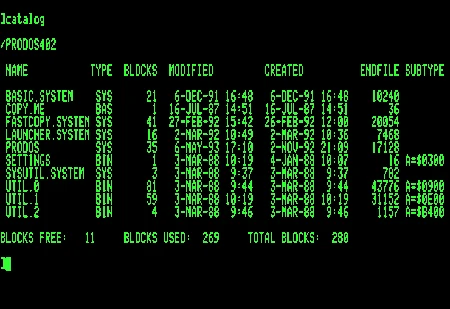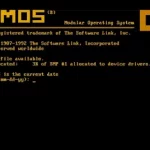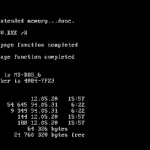Last Updated on: 12th March 2025, 11:42 am
Web site: (not active)
Origin: USA
Category: Desktop
Desktop environment: CLI
Architecture: Apple II
Based on: Apple DOS
Wikipedia: Apple ProDOS
Media: Install
The last version | Released: 2.0.3 | 1993
ProDOS – an operating system that allows you to manage many of the resources available to an Apple II. It functions primarily as a disk operating system, but it also handles interrupts and provides a simple means for memory management. ProDOS marks files with the current date and time, taken from a clock/calendar card if you have one.
ProDOS was commissioned to be the “Professional Disk Operating System”, and was first part of the Apple III’s “Sophisticated Operating System”.
The original DOS for the Apple II was designed primarily to support BASIC. If a programmer wanted to make use of the disk system for an assembly language program, he had to make use of undocumented, low level calls to the DOS File Manager, or possibly to some of the Main DOS Routines. This method was clumsy, and often made inefficient use of memory, as DOS expected that any calls made to it were done on behalf of BASIC. Moreover, this tied the hands of programmers at Apple in their ability to enhance DOS, since any changes they might make would most likely change internal addresses, and cause older software to malfunction if used with the revised DOS.
The operating system designed for the Apple III computer was called “SOS”. This title arose from the Apple III’s code name, “Sara”, which itself came from the name of engineer Wendell Sanders’ daughter. Originally, then, SOS stood for “Sara’s Operating System”.
SOS was the first operating system for a microcomputer to use the concept of “device drivers”, which were programs taken from the startup disk and made part of the operating system. These drivers told the computer how to communicate with the various devices that were attached to it, from a variety of disk drives to the keyboard and monitor. This gave flexibility to the Apple III to use new technology as it became available.





